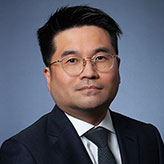August 3, 2022
What’s After the Storm?

When the markets are choppy, it’s easy to get distracted by each new wave of information. But rather than getting caught up in the storm we should be looking to the horizon for what’s coming next. In this update we will be moving away from the immediate challenges – which are unlikely to change in the short term – and shifting gears to future opportunities. Here are five key considerations for long-term investing in today’s markets.
1. Interest rates will be lower than normal
Generally speaking, developed economies have to contend with an aging and declining cohort within their population. This group pushes demand for interest bearing assets higher than normal, subsequently pushing yields lower. In addition, central banks are more likely to prioritize economies and employment over prices.
After several rounds of quantitative easing, debt levels are also too high to tolerate higher interest rates. Even though we are seeing rapid moves in interest rates, the terminal rates will still be below normal. Fixed income is no longer the perfect buy-and-hold investment given the low yields and volatility. Investors need to trade fixed income assets for cash or equity periodically.
2. Geopolitical tensions have increased
We have had economic integrations but many countries involved are still behind in terms of policies, democracy, and human rights. The recent Russia/Ukraine incident reminds us that some of these countries do not share the same values. We are seeing more separations between the two blocks: the G7 (Canada, France, Germany, Italy, Japan, the UK and the US) and the BRIC (Brazil, Russia, India and China), which account for roughly 70% of the global Gross Domestic Product (GDP). At the same time, there is more policy coordination within countries of the same block. The US, as leader of the G7 block, raised tariffs on Chinese goods and the entire G7 has also sanctioned Russia this year. We expect tensions to only grow between the two blocks until we share the same values.
Geopolitical tensions heavily impact investors' decisions in regard to geographical allocations and risk assessment. In addition, the role of the US dollar as the world currency will diminish as the BRIC grows.
3. Technology will continue to change our lifestyle
Technology is not just everything inside a personal computer. As a matter of fact, demand for personal computers has declined consistently. Technological advancement has been led by software, which has become increasingly integrated into our everyday life: doorbells, driver assistance in our cars, apps in our phones, etc. Software is constantly being "optimized" for consumer use to reduce our mistakes and enhance our productivity. We may see slowdown in global economies as interest rates rise but the tech wave will continue as we have all become addicted! The race between humans and “robots” started a while ago. The major issue for humans is we are limited to 24 hours a day; when we sleep, we stop producing. What one person can do becomes very limited. The only winners are the humans that own robots.
We continue to believe a portion of the investment portfolios should be invested in technology companies that dominate and continue to evolve. Obviously, certain things remain very labour intensive. For example, you can't construct a building virtually or without physical labour. Therefore, the cost will remain high. Real estate prices simply cannot fall just because we want them to.
4. Fight for climate change will not be disrupted by temporarily higher prices
Creating a cleaner world for our children actually requires the burning of oil. As a result, we are expecting higher oil and commodity prices as the world rebuilds new infrastructure. Unfortunately, this leads to inflation which offsets some of the deflationary benefit of technology. Even though inflation is very high globally today, it is not stopping the world leaders from battling climate change and pursuing clean energy.
5. The new generations are pursuing a “minimalistic” lifestyle
Young people these days prefer a simple “minimalistic” lifestyle. They are more willing to rent than to own. They prefer Uber for transportation, rent or Airbnb for their accommodation needs, and wear plain clothing that is endorsed by their friends on Instagram. What this tells us is that younger consumers are less willing to pay for customization and options as they are not eager to stand out. Consider the most popular vehicle: the Tesla Model S. It is plain outside and inside, and most importantly, the body style has not changed since 2012 when it was first launched. Most vehicles would have gone through at least two major overhauls and four facelifts in ten years.
From an investment perspective, this means the universe of companies will continue to shrink and the “losers” will pay for the growth of the “winners”. We've seen this trend in the last decade and it will only intensify. Investing "for “reversion-to-mean” becomes tricky.
The bottom line is, if you have a solid investment philosophy that is forward-looking, you should not waste your energy worrying about the volatility of the markets. We are in the eye of the storm with very high inflation, very aggressive interest rate hikes and growing risk of recession. What’s next is more important.
About the Author
Alfred Lam, Senior Vice President, Co-Head of Multi-Asset, joined CI GAM in 2004. He brings over 23 years of industry experience to his portfolio design, asset allocation, portfolio construction, and risk management responsibilities, which include chairing the multi-asset investment management committee and sizing investment bets to drive added value and manage risk. Alfred holds the CFA designation and an MBA from York University Schulich School of Business. He is a recognized leader in multi-asset investing in Canada. During his tenure, his team has won multiple investment awards, including the Morningstar Best Fund of Funds, and saw assets growing four-fold.
IMPORTANT DISCLAIMERS
Commissions, trailing commissions, management fees and expenses may all be associated with investments in the Assante Private Pools and the CI Funds and the use of Assante Private Portfolios. Mutual funds are not guaranteed, their values change frequently, and past performance may not be repeated. Please read the Assante Private Pools and/or CI Funds prospectuses and consult your advisor before investing.
Assante Private Portfolios is a program that provides strategic asset allocation across a series of portfolios comprised of Assante Private Pools and CI mutual funds and is managed by CI Global Asset Management (“CI GAM”). Assante Private Portfolios is not a mutual fund. CI GAM provides portfolio management and investment advisory services as a registered advisor under applicable securities legislation.
Assante Private Portfolios is available through Assante Capital Management Ltd. (a member of Canadian Investor Protection Fund and the Investment Industry Regulatory Organization of Canada) and Assante Financial Management Ltd., (a member of the Mutual Fund Dealers Association of Canada) both wholly-owned subsidiaries of CI Financial Corp. (“CI”). The principal business of CI is the management, marketing, distribution and administration of mutual funds, segregated funds, and other fee-earning investment products for Canadian investors through its wholly-owned subsidiary CI GAM. If you invest in CI products, CI will, through its ownership of subsidiaries, earn ongoing asset management fees in accordance with applicable prospectus or other offering documents.
Any reference to Assante Private Portfolios performance above refers to a model portfolio with a standard geographic asset allocation and blend of investment styles including alpha. Assumptions for the model portfolio include performance of the model portfolio is based on net returns and is representative of the Class/Series E shares of the underlying Assante Private Pools, or Series A classes in the case of underlying CI Funds. The portfolios are rebalanced monthly (actual client portfolios are rebalanced when the asset allocation exceeds the thresholds identified in the prospectus). No tax implications are triggered on rebalancing. The returns of the model portfolios are not indicative of returns for clients.
Certain names, words, titles, phrases, logos, icons, graphics, or designs in this document may constitute trade names, registered or unregistered trademarks or service marks of CI Investments Inc., its subsidiaries, or affiliates, used with permission. All other marks are the property of their respective owners and are used with permission.
CI GAM | Multi-Asset Management is a division of CI Global Asset Management.
Not to be reproduced or copied without the prior consent of CI Global Asset Management.
